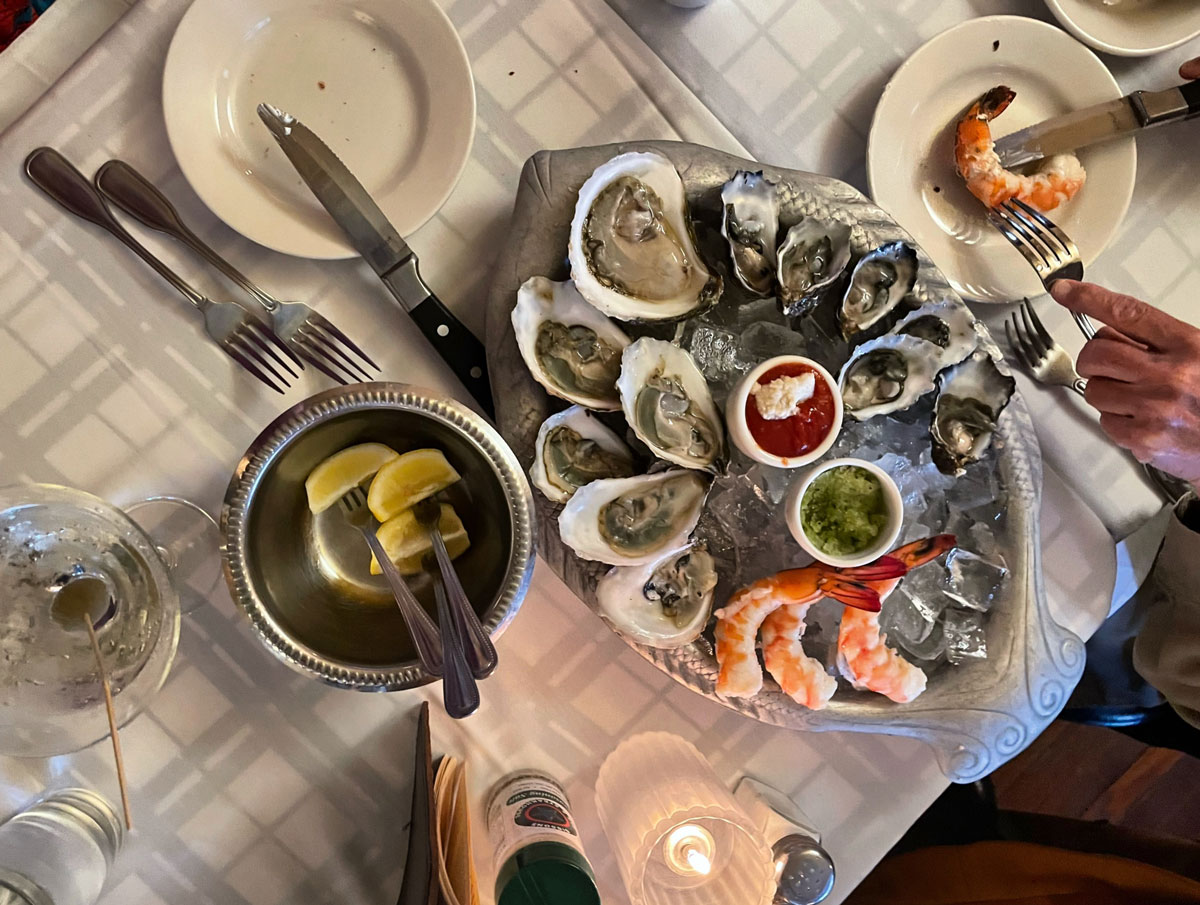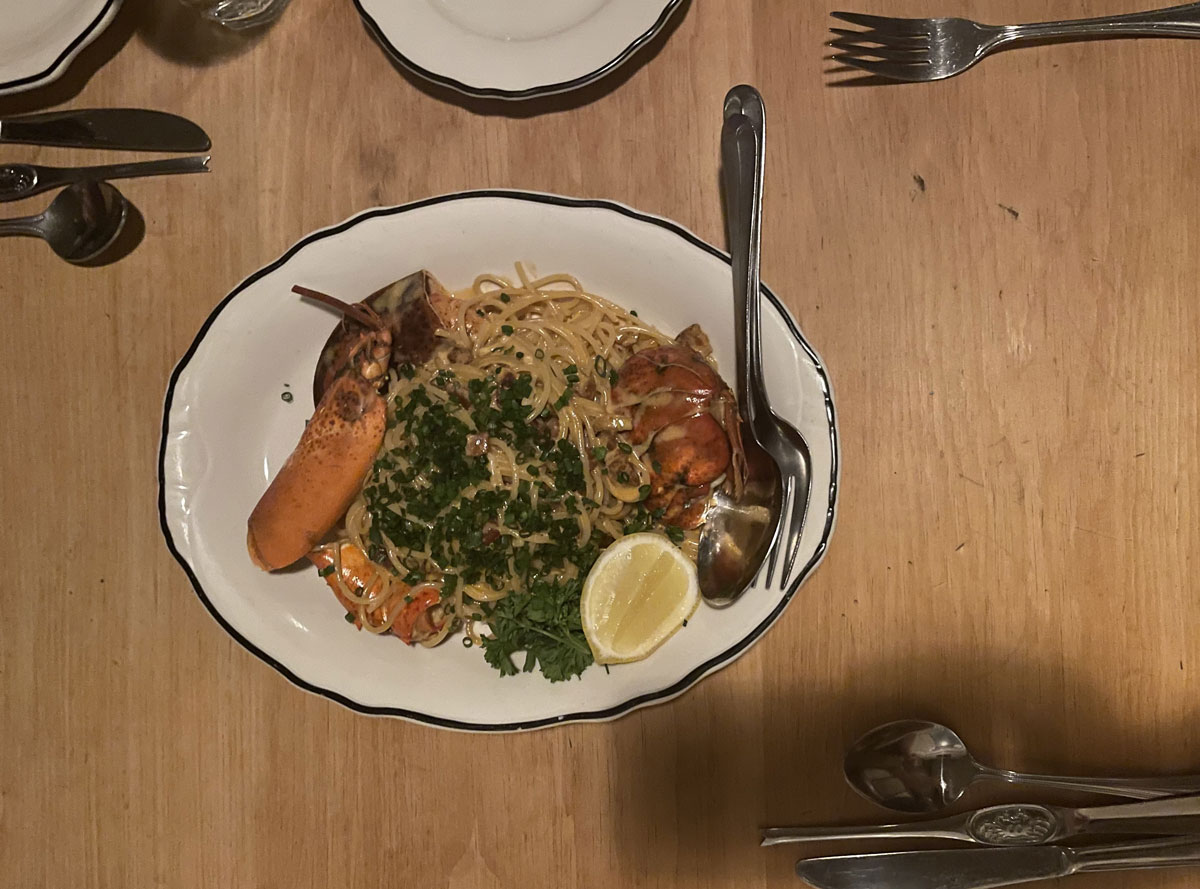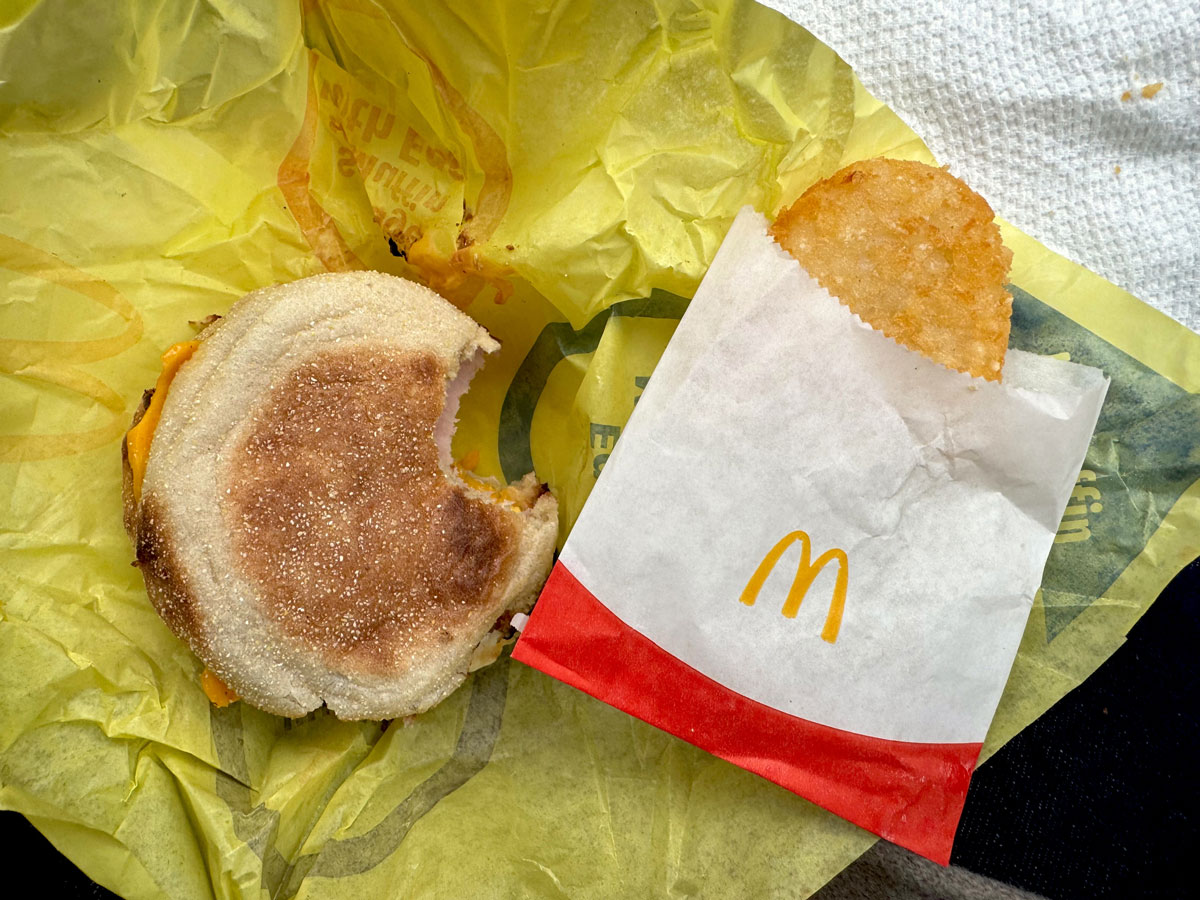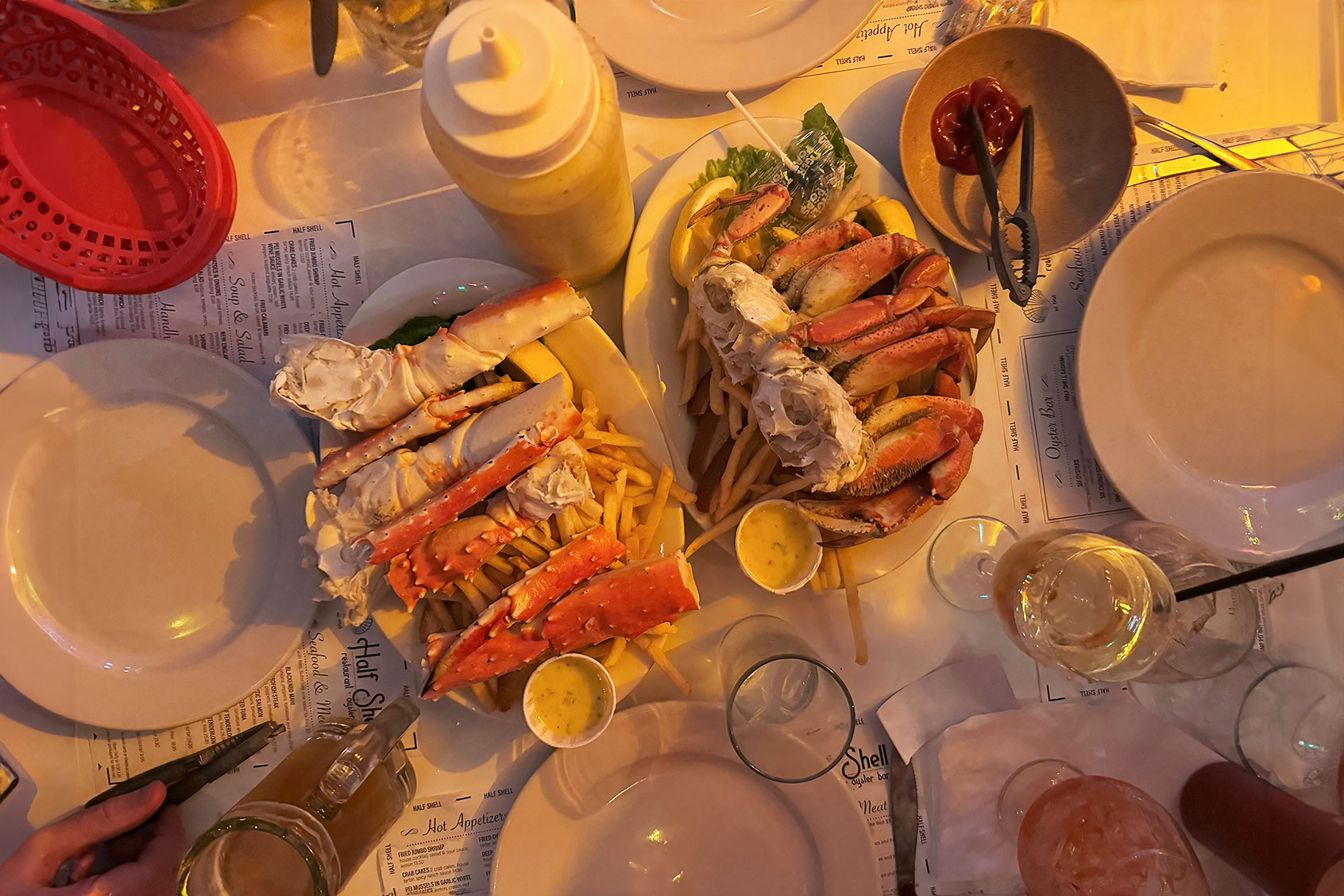For various reasons blurring the lines of work and pleasure, I’ve spent the past 13 years regularly documenting the food I cook and eat on Instagram. It began as equal parts photo diary and aspirational proving ground. I was barely a food writer back then, and my small platform lent another dimension to that persona. See? I cook clever dishes and go to interesting restaurants and have amusing opinions about what I eat!
My photos were really bad at first: unappetizing, boring — “Here’s some beige oatmeal I made!” — taken at poor angles, perpetually under- or over-exposed. But this was par for the course on the then-nascent app, where feeds mostly consisted of amateurish snapshots of friends’ and family’s vacations and meals, presented chronologically.
Over time, like everyone else on this attention-sucking platform, I got better at it. I found my preferred food filters (Clarendon) and angles (overhead). I accumulated followers and felt the hollow if intoxicating gratification of broaching some arbitrary number of likes (200 on this one!). When we entered the algorithmic era a few years ago, feeds became algorithm-curated mirrors held up to stuff we already liked. Settings, updates and filters shifted in favor of higher-engagement reels — which I don’t post. I felt personally attacked each time my hardwon engagement plummeted, which was often. Foodstagram got prettier, same-ier, lonelier and less fun. Advertisers shouldered their way in.
Yet I dutifully kept sharing my foodish photos and stories to a shrinking audience, wondering what I was still doing here and why.
***
Turns out, we humans have displayed our garish food selfies since at least the 1600s, when the pronkstilleven genre of painting originated in Antwerp. Meaning ostentatious or sumptuous still life, pronkstilleven art became all the rage in the Dutch Republic, both as a social documentation of wealth and a kind of moralistic satire.
These were the early days of capitalism, and 17th-century Holland had become one of the richest and most urbanized provinces on earth, thanks not just to colonialist exploits but a multinational company formed from various trading ventures called the Dutch East India Co. The merchants who’d accumulated this newfound wealth got a taste for the good life: luscious, imported citrus and plump olives; salt and spices; rich pastries; young game meats and wine — all doled out using gold, ceramic and pewter serveware.
They threw elaborate feasts like edible temples to their worldliness and wealth. But alas! How would fellow merchants or visiting dignitaries know about these luxe banquets once all those enviable perishables had been consumed? They commissioned artists like Jan Davidsz. de Heem — who’s credited with founding the style — Nicolaes Gillis, Clara Peeters and Adriaen van Utrecht to paint naturalist oil works depicting their lavish tables.
We need your help to stay independent
A 1630s oil painting by the Flemish Peeters, called “Still Life with Crabs, Shrimps and Lobsters,” looks something like a highly stylized shot you’d scroll past on a modern fine-dining restaurant’s Instagram announcing its $200-per-head brunch extravaganza. In the foreground, piles of cakes and bread threaten to tumble off the table. Three hulking partial wheels of cheese form the backdrop for a veritable bounty of eggs, crab, shrimp and boiled lobster, arranged amid gilded and pewter-topped vessels and silverware inlaid with precious stones.
 Oyster platter (Photo courtesy of Maggie Hennessy)
Oyster platter (Photo courtesy of Maggie Hennessy)
Pronkstilleven pieces are complex and elaborate — aspirational in the same way foodie socials favor the gauche. (Who doesn’t love to like a foie-topped wagyu burger or chicken nuggets wrapped in gold leaf and topped with caviar?) Yet pronk works carried deeper meanings as the earliest forms of vanitas, a genre that uses symbolism to convey the brevity of life and futility of pleasure. Even as the flourishing art market and overseas trade brought economic and cultural prosperity to Dutch society, the Protestant reformation was simultaneously propagating the spread of Calvinism across the northern Netherlands, which called for strict moralism.
Peeters’s “Still Life with Crabs, Shrimps and Lobsters” purportedly contains religious references, depicting foods allowed during the Lenten season as well as a scene of Abraham’s sacrifice of Isaac woven into the blue damask tablecloth. Tables overflowing with rich food sought to admonish self-indulgence, decorative empty vessels pointed to the emptiness of wealth and possessions, and oft-depicted roses suggested that beauty and life are fleeting.
All of this was to say: Soon you’ll die. What have you done with your time?
***
Last fall I was in Montreal on holiday, indulging in a hedonistic feast at Joe Beef that would’ve provided terrific fodder for pronkstilleven artists: oysters freshly plucked from the Atlantic; snails bathed in garlic butter; rosy curls of Iberian ham topped with compressed melon; glossy, brandy-drunk lobster spaghetti; and fat slices of steak, all washed down with bottle upon bottle of wine.
Joe Beef is one of the most famous restaurants in North America, with a slew of awards for its lust-for-life French cooking and a couple of cookbooks to its name. Its narrative arc is as thoroughly well-documented as that voluptuous lobster spaghetti. Nonetheless, I found myself compulsively getting up with the arrival of every dish, snapping dishes from overhead between sheepish apologies to my friends.
 Lobster spaghetti (Photo courtesy of Maggie Hennessy)Fortunately, the dim lighting in Joe Beef’s dining room is intended to foment escape, rather than accommodate unoriginal food photography, meaning every picture I took turned out unappetizing, amateurish and drab — with several unwelcomed cameos by the shadow of my hand holding the phone. As I later scrolled through this sickening slideshow, wondering what I could salvage to post, I realized how overdue I was to reexamine my relationship to documenting food on this increasingly vapid platform. Why did I wish these images looked better? For engagement bait? To prove I’d eaten at this restaurant? What was all this for anymore?
Lobster spaghetti (Photo courtesy of Maggie Hennessy)Fortunately, the dim lighting in Joe Beef’s dining room is intended to foment escape, rather than accommodate unoriginal food photography, meaning every picture I took turned out unappetizing, amateurish and drab — with several unwelcomed cameos by the shadow of my hand holding the phone. As I later scrolled through this sickening slideshow, wondering what I could salvage to post, I realized how overdue I was to reexamine my relationship to documenting food on this increasingly vapid platform. Why did I wish these images looked better? For engagement bait? To prove I’d eaten at this restaurant? What was all this for anymore?
My iPhone photo album is a compendium of a life centered around the dining table. It traverses ostentatious chilled seafood platters and glass eel pinxtos just before I slurped them down on the street in San Sebastian, Spain. There are selfies with a crackly baguette on the street and a huge head of CSA-grown lettuce in my home kitchen. I’ve saved snaps of my husband pulling the first cheesy slice of tavern-style pizza, my outstretched hand holding a Chicago-style hot dog at Wrigley Field, and literally dozens depicting my favorite breakfast: a single, oozing fried egg on toast with avocado and blobs of chili crisp.
 McDonald's breakfast (Photo courtesy of Maggie Hennessy)Capturing food is a way to teleport myself to specific, rich moments in time. What did the air feel like on my face that night in that city? Why did that bread taste so good? Who was I with at that restaurant, and what did we talk about? Where was I living at the time? As a storyteller, I will always feel compelled to document and share some of these experiences within my small sphere of influence. But lately I’ve begun saving more of life’s pure pleasures for myself too — deliciously here and then gone, sometimes to be forgotten, other times to be revisited in my album in all their grotesque, pixelated, unimaginative glory.
McDonald's breakfast (Photo courtesy of Maggie Hennessy)Capturing food is a way to teleport myself to specific, rich moments in time. What did the air feel like on my face that night in that city? Why did that bread taste so good? Who was I with at that restaurant, and what did we talk about? Where was I living at the time? As a storyteller, I will always feel compelled to document and share some of these experiences within my small sphere of influence. But lately I’ve begun saving more of life’s pure pleasures for myself too — deliciously here and then gone, sometimes to be forgotten, other times to be revisited in my album in all their grotesque, pixelated, unimaginative glory.
Read more
from this author

